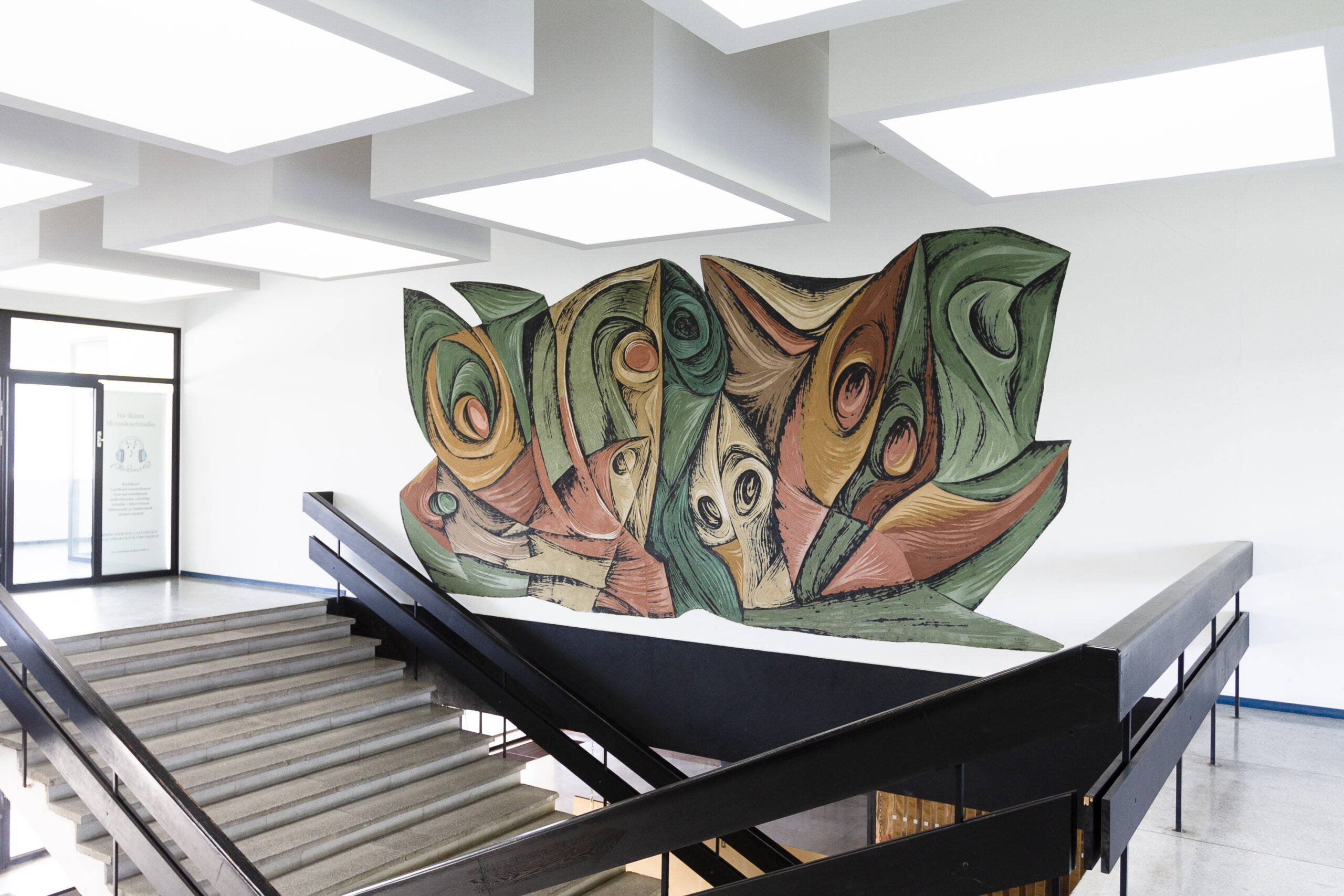Mural Kalad (“Fish”) in the administrative building of the Kirov Collective Fishing Farm
Year of completion: 1970s
Address: Harju County, Haabneeme, Kaluri tee 5
Tõnis Soop
Sgraffito technique, paint
Not listed as a cultural monument
In 1950, the Sergei Kirov Collective Fishing Farm, named after the Soviet revolutionary, was formed from multiple smaller fishing industries in the Viimsi peninsula. The model economic entity was unique in the Soviet Union, and shaped the appearance of Viimsi into what it is today.
Kirov’s Collective Fishing Farm was as though a country inside a country, living in their own bubble. The peninsula had all the essentials: kindergartens, schools, shops, entertainment venues, a service station, and a healthcare system. By the 1980s, Kirov had become one of the wealthiest independent economic entities in Soviet Estonia, offering wages so high compared to the rest of Estonia that no one bothered with the common act of stealing from the collective farm. Kirov’s economic entity was the first in the Soviet Union to be granted the right to process the fish they had caught themselves, while other collective farms had to hand theirs over to the state. We even owe our thanks to the Kirov collective farm for crabsticks, which are held in high esteem in Estonia, as the farm fought for a crabsticks production line straight from Japan through the Ministry of Fishery. Except for the tense work and constant overtime demanded in the collective farm, and the possibility to experience the barrel of a gun on the nape of one’s neck when picking flowers too close to the seaside border zone, life in Viimsi was quite enviable.
A large portion of the buildings in Viimsi right now were completed between the 1970s and 1980s, including Viimsi Conservatory, Viimsi School, and the recently demolished kindergarten Piilupesa, as well as an administrative building of the collective farm, which took over the role from the existing smaller central building built in the 1960s. In the 1970s, painter and art teacher Tõnis Soop was hired into the Kirov collective farm. He became one of the many artists in the gigantic economic entity that covered the area from Lohusalu to Kunda and even the coast of Lake Peipus. Soop designed a thematic sgraffito into the lobby of the newly constructed modern collective farm office. In addition to the regular sgraffito technique, Soop also used paint to add depth and form to composition of the fish and waves that alternatingly blended into each other. The artist who had initially come from Viljandi County soon became a very important person for Viimsi, designing the parish flag and coat of arms, as well as establishing the Viimsi Art School, where he was the first principal and a long-term teacher.
Anu Soojärv









